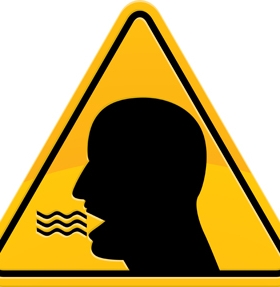Article at a glance:
With so many products on the market today claiming to battle bad breath it is hard to know which to use. Gum and mints temporarily make your breath fresher, but it is important to know how to prevent bad breath from happening in the first place.
Obviously, foods like onion, garlic, cheese, and coffee cause bad breath. And smoking will definitely leave you with a foul odor in your mouth. But the main cause of bad breath is poor oral hygiene. We develop bad breath when odor-producing bacteria is allowed to grow in our mouths. The only real way to truly prevent bad breath is through consistent brushing and flossing.
The American Dental Association recommends these four simple steps when brushing and flossing.
Step 1 – Brush twice daily with an ADA accepted fluoride toothpaste and replace your toothbrush every 3-4 months or sooner if bristles are frayed. Children under two should use non-fluoride toothpaste.
Step 2 – Floss between your teeth daily.
Step 3 – Eat a balanced diet and limit between meal snacks.
Step 4 – See your dentist regularly for professional cleanings and exams.
To remove all food particles and bacteria from your teeth, you will need to floss as well as brush. These food particles, if left behind, can create bacteria and plaque between your teeth and beneath the gum line. This will then lead to bad breath and other more serious dental issues.
Flossing doesn’t just mean putting floss between your teeth and pulling it through. In order to really get beneath the gum line, you have to make sure the floss runs along the side of each tooth. If you have a small mouth or you are working with a child, you might need to use a tool to make the flossing a little easier. There are several flossing utensils on the market that are small enough to fit in little mouths. If you are using a preloaded flossing tool, it helps to rinse the tool in mouthwash after each tooth.
Also, be sure to brush your tongue. Many odor-causing bacteria stay on your tongue even after you have brushed and flossed.
Following a routine of brushing and flossing isn’t just good for your oral health, it is also a great example for your children. Children who see their parents brush and floss regularly are much more likely to follow their positive example. When your children are younger, make sure you monitor their brushing and flossing and show them how to do it properly. It is never too soon for them to learn. We recommend starting the habit early by washing your baby’s gums with a clean, wet washcloth or piece of gauze.
If you have a problem with bad breath, it helps to keep a small hygiene kit with you in your car, purse, backpack or diaper bag so that you can still brush and floss when you are away from home. The more consistently you brush and floss the better your overall oral health will be, and good oral health means no more bad breath.
If you follow these steps and still are having issues with bad breath, then it might be time to speak with your dental provider to see if there is a bigger problem that needs attention.
